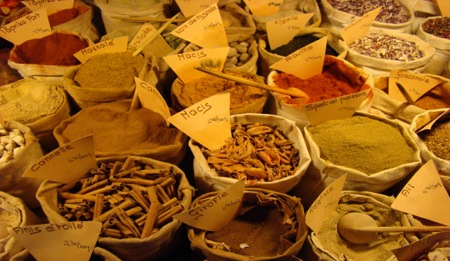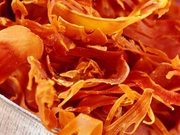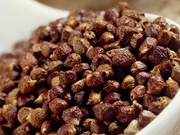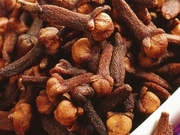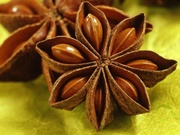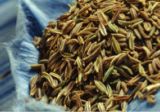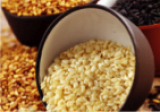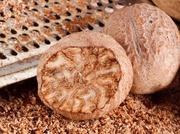The world of spice - a selection
We seek to offer the freshest, highest quality and most interesting selection of spices for your regular and more exotic cooking needs. In addition to dried peppercorns, chilis and sea salts, we offer a wide and colorful variety of flavors from the Near East, Africa, Asia and beyond.
Mace
Appreciated for its color, delicate taste and aroma. Slightly warmer, stronger and finer in flavor than nutmeg. Used in savory dishes, soups and seafood; purées, sauces.
Maniguette
Also known as grains of paradise. Spicy, warm seeds of the ginger family. Ground on vegetables or common substitute for black pepper.
Cloves
Should have reddish-brown stems. Pleasant smell and strong, pungent, spicy flavor. Digestive, antiseptic and analgesic properties, as well as appetite stimulant. Used for pickling, to stud onions and hams, to flavor beef stock and, more commonly, mulled wine.
Green Cardamom
Third most expensive spice after saffron and vanilla, member of ginger family. Warm, slightly pungent flavor, pleasant lemon, eucalytpus-like scent enhance both salty and sweet dishes. Often eaten raw as digestive, breath freshener. Essesential to Indian garam masala, curries and pilafs, used in Arab world to flavor coffee.
Star Anise
Spicy, aromatic smell reveals a piquante melée of slightly sweet flavors and licorice. Though containing anethole, not related to anise, native to China. Traditionally therapeutic, used in sweet (jams, syrups) and salty dishes (fish stews, Asian pork and poultry).
Tonka beans
Grown in NE South America, the tonka bean's active ingredient, coumarin, is released after being cured in rum and dried again. Highly aromatic, burnt flavor, beguiling hints of sweet clover, caramel, vanilla, almond and mocha. Used with creme brulée, chocolate, parfaits, macaroons and cherry desserts. Also with red cabbage, mashed potatoes, pumpkin soups, and shellfish. Usually grated or soaked in milk.
Cinnamon / Cannelle de Ceylon
Dried bark of the cinnamon tree, family Laurissilva. Harvested during Ceylonese rainy season May to October. Bark collected in 30 cm long pieces, sun dried, wrapped into tubes and then cut.
Cumin
Originates from Nile river delta from the parsley family, in use over 5000 years as both a currency and a spice. Wide range of traditional uses, depending on region: in Northern Europe pickling, Dutch and Swiss cheeses, French and German cakes and breads, Spanish stews, American chili con carne, Indian garam masala, and generally in fish dishes.
Tumeric
From the ginger family, tumeric has a finger-like form, more often ground to powder for ease of use.
White sesame
Sesame seeds very popular Eastern cooking as a decoration and flavor for baked goods; a crunchy coating for various foods; and a companion flavor to eggplant, beans and potatoes.
Nutmeg
Like many spices, nutmeg was used first in the pharmacy before the kitchen: Still regularly used in Eastern medicine as a digestive and stimulant. Delicately scents fruit, gratins, white sauces and soufflés. Also excellent with spinach, pineapple and seafood.
Liquorice
A root containing resin and essence which lend it a hot taste, though flavor is more aromatic than piquant. Both sweet and bitter, thus common in confectionary, but also used to flavor savory broths.
Blue Poppy
Egyptians, Greeks, and other ancient cultures used poppy seeds for many purposes, most of them medicinal. Tiny, kidney-shaped with a sweet nutty flavor. Mainly used in baked goods, but also in salad dressings, curries and sauces for meat and fish.

